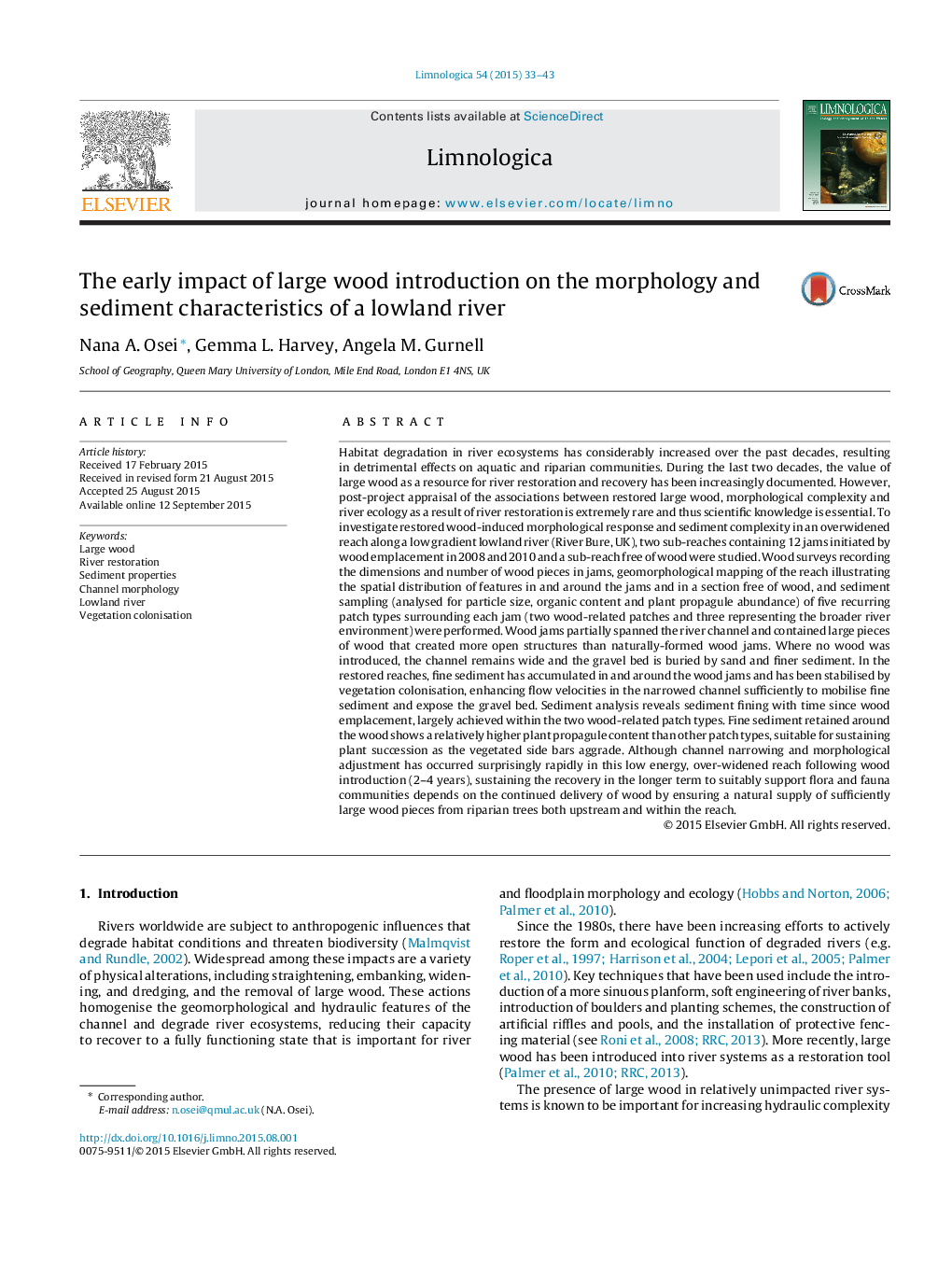| کد مقاله | کد نشریه | سال انتشار | مقاله انگلیسی | نسخه تمام متن |
|---|---|---|---|---|
| 6305614 | 1618568 | 2015 | 11 صفحه PDF | دانلود رایگان |
عنوان انگلیسی مقاله ISI
The early impact of large wood introduction on the morphology and sediment characteristics of a lowland river
ترجمه فارسی عنوان
تأثیر اولیه ورود بزرگ چوب به مورفولوژی و خصوصیات رسوب رودخانه کمین
دانلود مقاله + سفارش ترجمه
دانلود مقاله ISI انگلیسی
رایگان برای ایرانیان
کلمات کلیدی
موضوعات مرتبط
علوم زیستی و بیوفناوری
علوم کشاورزی و بیولوژیک
علوم آبزیان
چکیده انگلیسی
Habitat degradation in river ecosystems has considerably increased over the past decades, resulting in detrimental effects on aquatic and riparian communities. During the last two decades, the value of large wood as a resource for river restoration and recovery has been increasingly documented. However, post-project appraisal of the associations between restored large wood, morphological complexity and river ecology as a result of river restoration is extremely rare and thus scientific knowledge is essential. To investigate restored wood-induced morphological response and sediment complexity in an overwidened reach along a low gradient lowland river (River Bure, UK), two sub-reaches containing 12 jams initiated by wood emplacement in 2008 and 2010 and a sub-reach free of wood were studied. Wood surveys recording the dimensions and number of wood pieces in jams, geomorphological mapping of the reach illustrating the spatial distribution of features in and around the jams and in a section free of wood, and sediment sampling (analysed for particle size, organic content and plant propagule abundance) of five recurring patch types surrounding each jam (two wood-related patches and three representing the broader river environment) were performed. Wood jams partially spanned the river channel and contained large pieces of wood that created more open structures than naturally-formed wood jams. Where no wood was introduced, the channel remains wide and the gravel bed is buried by sand and finer sediment. In the restored reaches, fine sediment has accumulated in and around the wood jams and has been stabilised by vegetation colonisation, enhancing flow velocities in the narrowed channel sufficiently to mobilise fine sediment and expose the gravel bed. Sediment analysis reveals sediment fining with time since wood emplacement, largely achieved within the two wood-related patch types. Fine sediment retained around the wood shows a relatively higher plant propagule content than other patch types, suitable for sustaining plant succession as the vegetated side bars aggrade. Although channel narrowing and morphological adjustment has occurred surprisingly rapidly in this low energy, over-widened reach following wood introduction (2-4 years), sustaining the recovery in the longer term to suitably support flora and fauna communities depends on the continued delivery of wood by ensuring a natural supply of sufficiently large wood pieces from riparian trees both upstream and within the reach.
ناشر
Database: Elsevier - ScienceDirect (ساینس دایرکت)
Journal: Limnologica - Ecology and Management of Inland Waters - Volume 54, September 2015, Pages 33-43
Journal: Limnologica - Ecology and Management of Inland Waters - Volume 54, September 2015, Pages 33-43
نویسندگان
Nana A. Osei, Gemma L. Harvey, Angela M. Gurnell,
